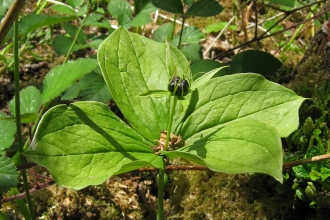Nature Reserves
There is limited parking at many of our nature reserves so please return at a less busy time if there is no parking available when you arrive.
Thank you for being considerate to our staff, volunteers, other visitors and wildlife when visiting our nature reserves. Please watch our short video to find out how you can help protect wildlife…
Nature reserves are refuges for wildlife
Our nature reserves are special places for wildlife. Please keep to paths and pay attention to signage. Dogs are welcome on some nature reserves but please keep them on a lead at all times and take away any mess. Please follow these simple steps to ensure the safety of our wildlife:
- Keep dogs on leads. Even the friendliest of dogs can appear threatening and may cause a bird to leave a nest altogether. It’s not just ground-nesting birds that are at risk – many species nest (summer) and roost (winter) in vegetation close to the ground alongside paths.
- Stick to paths. Whether it’s a public right of way, a bridleway or a permissive path, please stick to these and don’t make your own paths. Only take horses or cycles on designated bridleways.
- Stay alert. If a bird is calling ‘at you’, you’re too close to the nest. If it’s carrying food, let it feed its young. Don’t pause and keep on walking.
- Report bad or suspicious behaviour. If you see anything suspicious – wildlife crime, fly-tipping, fires. motorbikes or more, please report this using 101 (non urgent) or 999 (urgent)
We own and manage more than 75 amazing places for wildlife. You are welcome to visit most of these to immerse yourself in the beauty of nature and the wonders of Worcestershire's wildlife. Almost 30, however, are true wildlife havens (not listed on our website) and can only be visited for research purposes with special permission from the Trust - please get in touch if you would like to know more about accessing any of these delicate and special places.
To help us look after all these fabulous places and to discover more about the wildlife that lives there, why not become a member.
Your group is welcome to visit without a guide but to ensure you have the best visit that isn't compromised by work that's taking place, education activities or other group visits, please contact Rob (01905 754919) to book your visit. Please also consider making a donation to the Trust to help with the ongoing costs of managing our nature reserves.
Nature Reserves
Filters
112 results

Pennels Bank Wood
A rich woodland, with a good number of woodland bird & plant species.
Humpy Meadow
A small wildflower meadow covered with thousands of anthills.
Motlins Hole
A woodland containing many fine semi-mature oak and ash trees with good plant and birdlife.
Lugg Meadow
Lugg Meadow is one of the most important surviving Lammas Meadows in the UK.
Romers Wood
A fine example of ancient woodland that runs in a steep-sided dingle.
Upper Swingley Wood
A long narrow strip of woodland with a small stream running through the centre.
Hampton Park Road Meadow
Situated on the outskirts of Hereford, Hampton Park Road Meadow consists of a small field of semi-improved grassland, with a scattering of mature orchard trees, a newly planted orchard, fringed by…
Bodenham Lake
Bodenham Lake is an important overwintering and breeding area for birds and other aquatic wildlife, so approximately half of the site is managed as a wildlife refuge with restricted public access…
Hunthouse Wood
This dingle woodland reserve contains a rich mixture of broad leaved trees, ferns & mosses
Piper's Hill & Dodderhill Commons
Also known as Hanbury Woods, this relict wood pasture reserve contains some of the oldest trees in the county.
